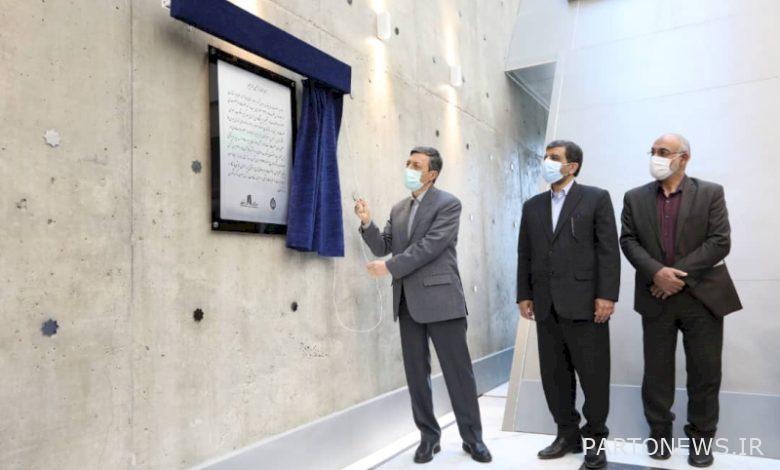The Museum of Historical Cars of Iran was inaugurated with the presence of Engineer Zarghami

According to Heritage Aria reporter, Engineer Seyed Ezatullah Zarghami and Parviz Fattah on the sidelines of the opening of the museum, accompanied by a number of managers of the two departments visited the museum in different parts of the museum and in conversation with experts and guides of the museum closely with the available historical vehicles They got acquainted in this museum.
Speaking at the inauguration ceremony of the museum, Parviz Fattah, head of the Foundation for the Underprivileged, said: “It was possible to open the museum two or three months ago, but it was not possible due to the fifth wave of the corona. “Rabi is a happy history that was chosen for the opening of this museum.”
He continued: “I wrote a few drafts to the Supreme Leader of the Revolution about the museum, and he also welcomed this issue and even emphasized that the people should visit the museums and be exposed to the public, so along with the activity. “In the field of employment and deprivation, we are also pursuing this issue as an important cultural event, and several more museums will be opened by the end of this year.”
“The items on display in these museums belong to the people, which must be both preserved and well-presented,” Fattah continued. “We have obtained the necessary permits and good work has been done with the cooperation of the Ministry of Heritage, Culture, Tourism and Handicrafts and the municipality, one of which is the Museum of Historic Cars.”
He recalled: “Before the construction of this museum, there were offers to sell these cars. Even the manufacturers wanted these cars and paid good money, but we did not do that and made these cars visible to the dear people by building such a museum. we gave.”
The head of the Foundation for the Underprivileged added: “61 vehicles are on display in this museum, and twice that number are kept in tanks, and we will probably open other branches in other provinces as well.”
He continued: “I testify that since 1979, when we collected these cars, none of the officials of the Islamic Republic have used these cars. Some of these cars have a great financial value and tell the story, such as the Nasserite carriage that narrates the assassination of Nasser al-Din Shah or the carriage that was used in the coronation of the Pahlavi era. “These are parts of history.”
“These are all lessons and show that these behaviors are not permanent. Fortunately, we see in the Islamic system that the late Imam had a simple life and that the Supreme Leader of the Revolution also had a simple life,” Fattah said.
“Now that Corona has largely declined, there is a need to reconsider tourism as well as museum visits,” he told Engineer Zarghami.
At the end of his speech, the head of the Foundation for the Oppressed noted: “We stand for the support of the oppressed. “As for this museum, its income will be spent on the poor.”
Historic cars do not represent the glory of governments
Heshmatullah Ghanbari, the director of the Museum of the Foundation for the Underprivileged, said in a speech at the ceremony: “What we are going to do in the field of museology is achieved in the shadow of the Holy Quran, because we have loans that are a mixture of lessons, lessons and ideas. »
He added: “There was a concern about historic cars, and that was that they were the property of the tyrannical era, and some were concerned that Majd might indicate a historical period; “While this idea is false and the glory of a government is not to order a car from abroad for the birth of one of the sons of the Pahlavi government.”
Ghanbari added: “These cars that you see are not priced in rials, but they gave these cars to the Pahlavi government and divided a part of Iran called Bahrain.”
The historian continued: “We respect the power of crafts and the handicrafts of artists. In this museum, too, this is how we look at cars, which shows the importance of the power of artists’ handicrafts. “We do not care who got in these cars.”
The Museum of Historical Vehicles of Iran was established in 2003 with a rich collection of historical vehicles that arrived in Iran before 1978, but its building was renovated and modernized in 1999.
.

